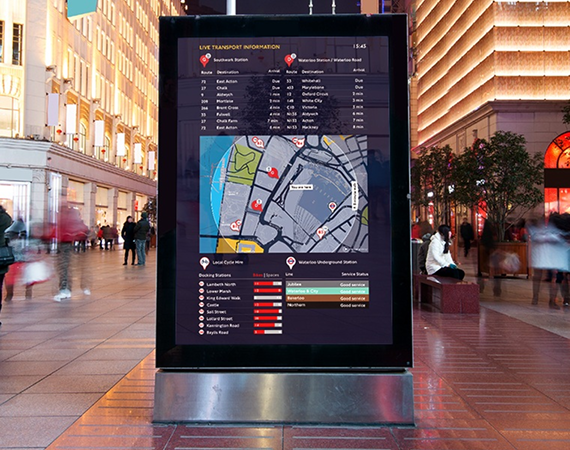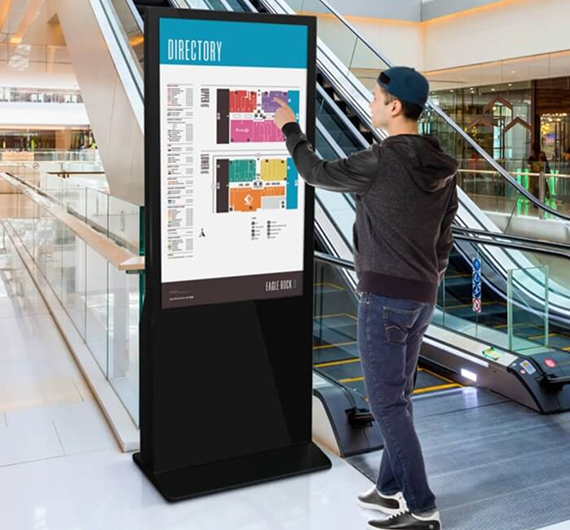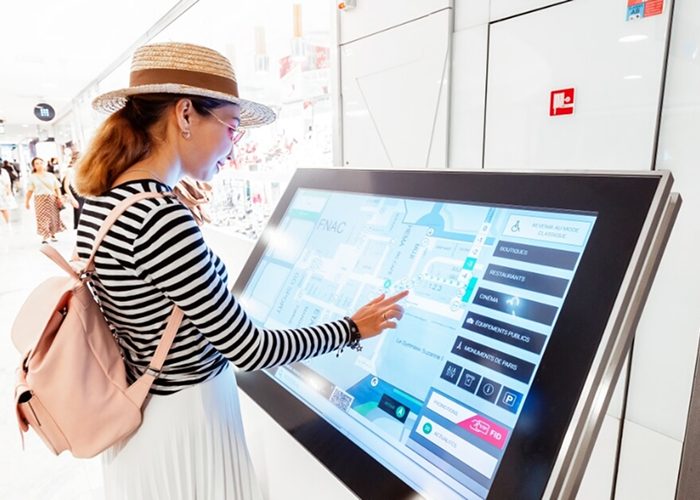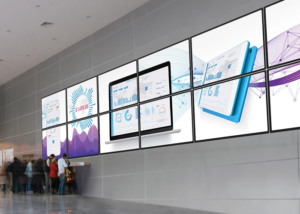Digital signage in public spaces has rapidly evolved from static screens to dynamic, interactive, and immersive experiences. No longer limited to advertising, digital signage in public spaces now plays a critical role in civic engagement, cultural expression, education, and real-time communication. Governments and public institutions are leveraging this technology to connect with citizens in smarter, more meaningful ways.
In this article, we’ll explore the innovative uses of digital signage in public spaces, from artistic installations and interactive experiences to digital storytelling that transforms urban life.

Art in Motion: Transforming Public Spaces with Digital Signage Art Installations
In recent years, digital signage has emerged as a powerful medium for digital art displays and public installations. Cities around the world are using digital signage in public spaces to showcase moving artwork, animated murals, and culturally relevant media that engage residents and tourists alike.
Municipal governments and cultural departments are commissioning interactive installations in parks, transit stations, and city squares, turning ordinary locations into immersive, artistic environments. These public projects enhance the aesthetic appeal of urban settings while promoting local artists and community identity.
For example, a digital mural on the side of a government building can change seasonally or in response to public events, offering a community engagement opportunity that static art cannot match. Such integrations of digital art in urban life signal a shift toward more dynamic and responsive public spaces.

Interactive Experiences: Engaging Audiences Beyond Passive Viewing
Beyond passive displays, digital signage for government in public spaces has become a tool for creating interactive experiences that truly engage the public. These systems invite passersby to participate through motion sensors, QR codes, voice commands, and touchscreens.
Experiential marketing techniques, often used in retail, are now being adapted for civic purposes. For example, a touchscreen display outside a city hall can allow residents to explore current initiatives, leave feedback, or navigate public services. This elevates the citizen’s experience from observer to participant.
Audience interaction is particularly effective in high-traffic areas such as train stations, airports, and public squares. Governments can use digital displays to share emergency alerts, promote healthy behavior campaigns, or even gamify public service announcements to encourage awareness.
Digital Storytelling in Urban Spaces
Public storytelling has always been a method of passing down knowledge and fostering unity. With the advent of digital signage in public spaces, storytelling has taken a modern, engaging twist.
Educational displays at museums, libraries, and historical sites now use video, animation, and augmented reality to bring local history and government projects to life. A digital kiosk might tell the story of a neighborhood’s transformation, highlight notable community figures, or illustrate the impact of public policies.
Governments can also use storytelling through signage to promote new policies or explain complex issues in a simplified, visual manner. This builds trust and transparency, allowing citizens to feel more informed and involved.
In campaign seasons, digital signage for government facilities can support promoting new campaigns, voter education, and participation reminders in a highly visible and cost-effective way.

Benefits of Digital Signage for Government Facilities
Implementing digital signage in public spaces provides several strategic advantages for public sector institutions:
- Real-time updates on transportation, weather, or safety information
- Accessibility for multi-language and inclusive communication
- Sustainability, reducing paper waste and signage clutter
- Data-driven insights via interaction analytics to inform future planning
Public administrators and decision-makers are increasingly seeing digital signage not just as a display solution but as an intelligent communication tool that enhances transparency, responsiveness, and community engagement.
Conclusion
The use of digital signage in public spaces is redefining how governments communicate, educate, and connect with their communities. From transforming cityscapes into digital art galleries to creating meaningful interactions and narratives, the possibilities extend far beyond the screen.
As public expectations for smart, responsive cities grow, so too does the importance of embracing digital signage for government facilities. By thinking creatively and strategically, government leaders can make their cities more vibrant, informed, and inclusive.





